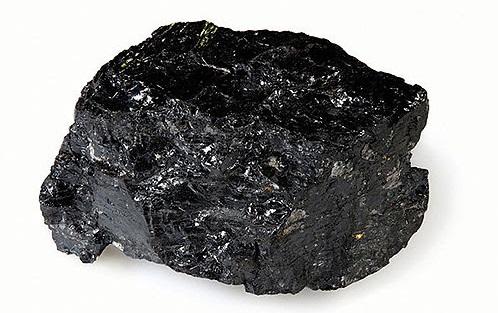If you want to get acquainted with ” natural bitumen ” and its uses in more detail, stay tuned and read this article from Nikan West website the gilsonite producer in Iran.
what is natural bitumen ?
Natural bitumen definition has specific and defined applications in various industries. Every industry uses natural bitumen as a raw material or final product according to its needs. Gilsonite means the same bitumen that is naturally extracted and used from mines. The use of bitumen or solid glycine is very diverse, which you will get acquainted with briefly in the continuation of this article.
What is the application of natural bitumen?
Natural bitumen or Gilsonite has various applications in various industries. In other words, it can be said that bitumen is used in road construction, oil and gas, waterproofing and insulation industries, and finally coking and as a fuel. Moreover, the easiest way to use natural bitumen is to use it as fuel.
In this method, bitumen is used to supply fuel to furnaces with almost no processing operations.
Meanwhile, Gilsonite is very similar to coal, and since it is usually being extracted from natural mines, it is also called natural or mineral bitumen.

Where can we find natural bitumen?
In general, bitumen or Gilsonite is made in two types: “natural or mineral bitumen” and “oil or refinery”. Both forms of this material generally have similar shapes and properties, despite minor differences in structure.
In a brief description, mineral or natural bitumen definition is bitumen that is readily extracted through mineral extraction or from lakes of natural bitumen. This is while petroleum or refinery bitumen is extracted in the process of crude oil processing.
A handful of countries have bitumen mines, including Canada, Iraq, Australia, Russia and Venezuela. Major natural bitumen resources are in Alabama, Alaska, California, Kentucky, New Mexico, Oklahoma, Texas, Utah, and Wyoming. Utah is estimated to contain about 18,680 MMBO in 10 major accumulations.
Natural bitumen definition accumulations in the United States are generally known as “tar sands,” a generic term that has been used for several decades to describe petroleum-bearing rocks exposed on the Earth’s surface. Other terms for such accumulations include oil sand, oil-impregnated sand, asphaltic sand, rock asphalt, bituminous rock, and bitumen-bearing rock. Natural bitumen is defined as petroleum with a gas-free viscosity greater than 10,000 centipoises at original reservoir temperature.
Where is bitumen in Iran?
Fortunately, the rich nature of Iran has also benefited from this blessing and natural bitumen Iran mines can be found in western and southern cities of Iran such as Kermanshah, Ilam and Khuzestan. The sale of Gilangharb natural bitumen iran in Kermanshah has played an important role in currency exchange, job creation and improving the country’s economic situation.
Moreover, all you need to know about Natural Asphalt Lake is here.
Types of Natural Bitumen
According to the location of natural bitumen price extraction in a more detailed category, this product is divided into several different samples. The location of mineral bitumen extraction causes the material and composition of materials used in them to have significant differences with each other, which is effective in the type of application.
Improper extraction of bitumen can cause problems such as high sulfur content in bitumen, high aging, high percentage of minerals and associated impurities and lack of accurate identification of the type and properties of bitumen.
Suitable Gilsonite is identified in different ways that are used in different industries for different purposes. In general, suitable mineral bitumen has a high ability to be mixed with petroleum bitumen, and after mixing, a suitable product is obtained from it in accordance with standard road bitumen.
The consumption of bitumen is high; For example, it is used in the paint and resin industries to coat products or in casting as an additive.
In the meantime, if you want to get acquainted with asphalt, its features and the three most widely used types of asphalt in the world, stay tuned for this article.
Is Bitumen a Natural Product?
bitumen, dense, highly viscous, petroleum-based hydrocarbon that is found in deposits such as oil sands and pitch lakes or is obtained as a residue of the distillation of crude oil (refined bitumen). In some areas, particularly in the United States, bitumen is often called asphalt, though that name is almost universally used for the road-paving material made from a mixture of gravel, sand, and other fillers in a bituminous binder.
Natural bitumen is also frequently called tar or pitch—though, properly speaking, tar is a byproduct of the carbonization of coal and pitch is actually obtained from the distillation of coal tar.
Natural bitumen is still the preferred geological term for naturally occurring deposits of the solid or semi-solid form of petroleum. “Bituminous rock” is a form of sandstone impregnated with bitumen. The oil sands of Alberta, Canada are a similar material.
The Differences Between Natural Asphalt and Natural Bitumen
Natural bitumen is really the liquid binder that holds natural asphalt together. The term bitumen is usually mistakenly wont to describe natural asphalt.
A bitumen-sealed road includes a layer of bitumen sprayed then covered with a combination. this is often then repeated to present a two-coat seal.
Natural asphalt is created during a plant that heats, dries and mixes combination, gilsonite and sand into a composite combine. it’s then applied through a paving machine on site as a solid material at a nominated or needed thickness, relative to the tip use. Asphalt results in a power tool and additional durable surface than a bitumen-sealed road.
When working with natural asphalt or Gilsonite, it’s important to grasp the various varieties that are available. There are 3 main sorts of natural bitumen: Hot Asphalt, mc Cold combine, and UPM. There are totally different types of these asphalts for summer and winter use. Below could be a brief overview of every form of asphalt.
More details about hot asphalt
Hot Asphalt is that the form of natural asphalt that you mostly see once driving past a construction crew. Use mostly for paving and patching, Hot Asphalt, as its name suggest, is best to figure with once the temperature of the asphalt is high. Hot Asphalt could be a permanent solution to a problem, however should be used almost immediately when purchasing. because the asphalt cools, it becomes more and more difficult to work with, and once fully cool, it hardens sort of a rock.
MC Cold combine is asphalt that may be used as a temporary fix. Since the asphalt is used at cold temperatures, it’s slow to cure and best used in areas that have little to no traffic.
UPM is additionally a cold combine Gilsonite , however in contrast to mc Cold combine, it is often used as a permanent fix to any asphalt or concrete problem, Designed to figure in any weather condition, UPM are often wont to fix each wet and dry holes, allowing you to create any repair in any situation. Once that asphalt has been compacted, it’s immediately able to be tread upon. Learn additional about the benefits of UPM.
These 3 different types of Gilsonite supply good solutions to asphalt problems that you simply might have in your home or business. By knowing the differences, you’ll make sure you pick the proper one for your situation.
Follow us on Instagram to know the Gilsonite price and Bitumen.


